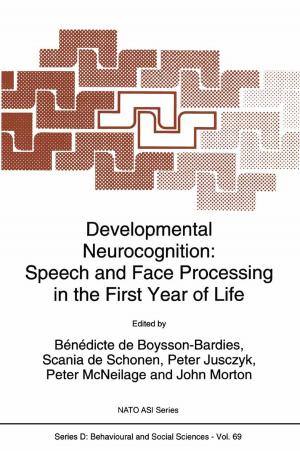Spatial and Temporal Reasoning
Nonfiction, Computers, Advanced Computing, Artificial Intelligence, Reference & Language, Language Arts, Linguistics| Author: | ISBN: | 9780585283227 | |
| Publisher: | Springer Netherlands | Publication: | July 27, 2007 |
| Imprint: | Springer | Language: | English |
| Author: | |
| ISBN: | 9780585283227 |
| Publisher: | Springer Netherlands |
| Publication: | July 27, 2007 |
| Imprint: | Springer |
| Language: | English |
Qualitative reasoning about space and time - a reasoning at the human level - promises to become a fundamental aspect of future systems that will accompany us in daily activity.
The aim of Spatial and Temporal Reasoning is to give a picture of current research in this area focusing on both representational and computational issues. The picture emphasizes some major lines of development in this multifaceted, constantly growing area. The material in the book also shows some common ground and a novel combination of spatial and temporal aspects of qualitative reasoning.
Part I presents the overall scene. The chapter by Laure Vieu is on the state of the art in spatial representation and reasoning, and that by Alfonso Gerevini gives a similar survey on research in temporal reasoning. The specific contributions to these areas are then grouped in the two main parts. In Part II, Roberto Casati and Achille Varzi examine the ontological status of spatial entities; Anthony Cohn, Brandon Bennett, John Gooday, and Nicholas Gotts present a detailed theory of reasoning with qualitative relations about regions; Andrew Frank discusses the spatial needs of geographical information systems; and Annette Herskovits focuses on the linguistic expression of spatial relations. In Part III, James Allen and George Ferguson describe an interval temporal logic for the representation of actions and events; Drew McDermott presents an efficient way of predicting the outcome of plan execution; and Erik Sandewall introduces a semantics based on transitions for assessing theories of action and change. In Part IV, Antony Galton's chapter stands clearly between the two areas of space and time and outlines the main coordinates of an integrated approach.
Qualitative reasoning about space and time - a reasoning at the human level - promises to become a fundamental aspect of future systems that will accompany us in daily activity.
The aim of Spatial and Temporal Reasoning is to give a picture of current research in this area focusing on both representational and computational issues. The picture emphasizes some major lines of development in this multifaceted, constantly growing area. The material in the book also shows some common ground and a novel combination of spatial and temporal aspects of qualitative reasoning.
Part I presents the overall scene. The chapter by Laure Vieu is on the state of the art in spatial representation and reasoning, and that by Alfonso Gerevini gives a similar survey on research in temporal reasoning. The specific contributions to these areas are then grouped in the two main parts. In Part II, Roberto Casati and Achille Varzi examine the ontological status of spatial entities; Anthony Cohn, Brandon Bennett, John Gooday, and Nicholas Gotts present a detailed theory of reasoning with qualitative relations about regions; Andrew Frank discusses the spatial needs of geographical information systems; and Annette Herskovits focuses on the linguistic expression of spatial relations. In Part III, James Allen and George Ferguson describe an interval temporal logic for the representation of actions and events; Drew McDermott presents an efficient way of predicting the outcome of plan execution; and Erik Sandewall introduces a semantics based on transitions for assessing theories of action and change. In Part IV, Antony Galton's chapter stands clearly between the two areas of space and time and outlines the main coordinates of an integrated approach.















